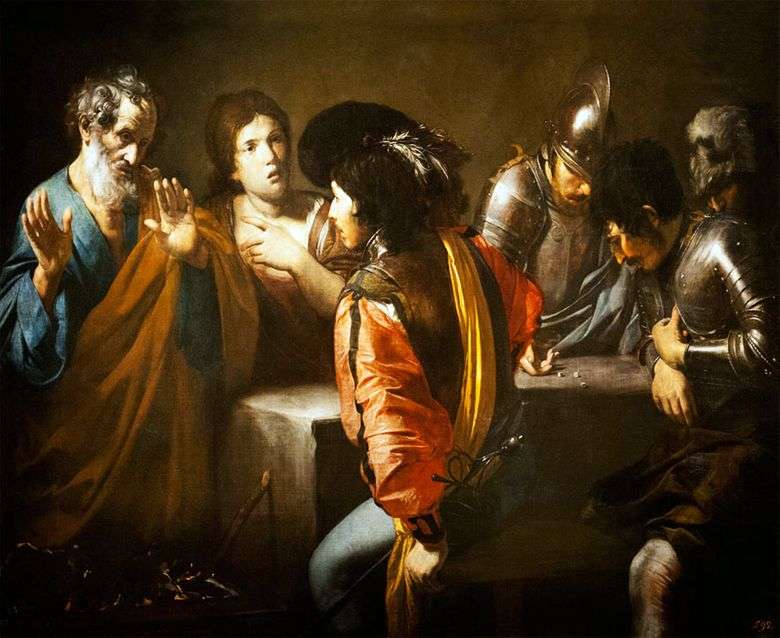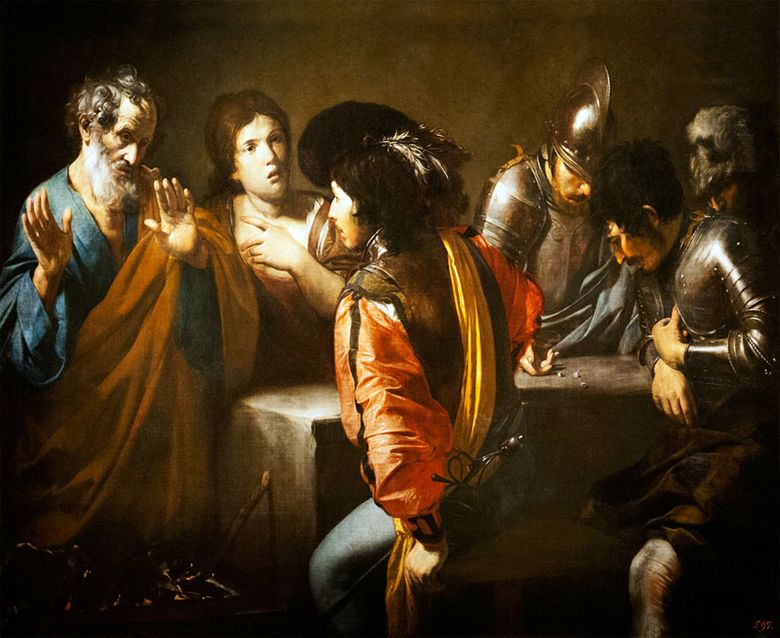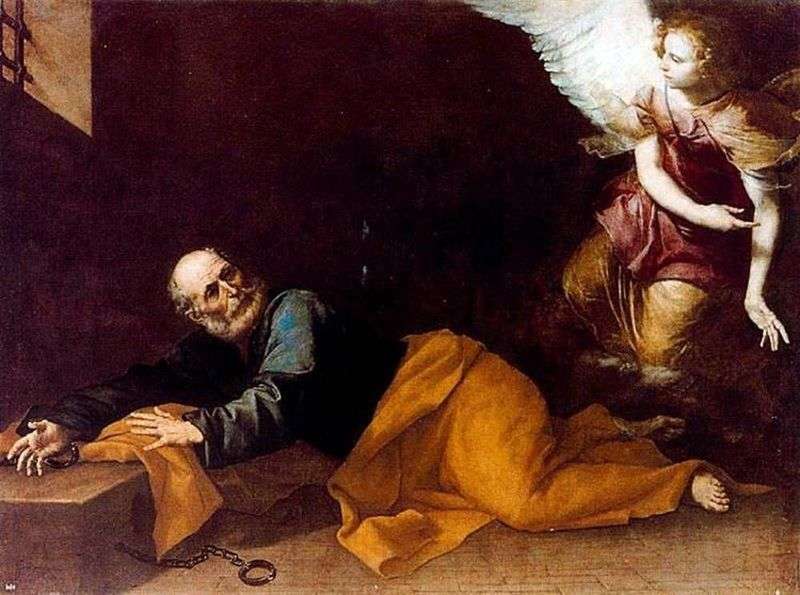
At the turn of the 16th – 17th centuries, the development of all major European art schools, and the French one in particular, was influenced by the direction of caravagism that developed in Italy. Valantine de Boulogne – a French follower of the founder of European realism in the painting of Michelangelo da Caravaggio, lived and worked in Italy. His big picture “Renunciation of St. Peter” is written in the Gospel story. According to the prediction of Christ, his disciple, the apostle Peter, denied the teacher three times after Christ was taken into custody.
This tragic moment of human weakness is portrayed by the artist as a routine, as an episode of his contemporary life. In the semi-darkness of the tavern, the figure of the old man with the wrinkled face of a simple peasant is attracted by an eloquent gesture that rejects the accusation.
A young woman points to him as a guardian, as a companion of Christ. Soldiers in metal armor do not pay attention to what is happening, they are engaged in playing dice. The young man, who is sitting with his back to the spectator, is dressed in a silk red coat, on his head a black velvet beret with a feather is a typical character of the genre painting of Caravaggio.
A directional ray of light accentuates the expressiveness of facial expressions and gestures, emphasizes materially tangible qualities, sometimes secondary to the plot, but important for the figurative meaning of the picture of everyday objects and costumes. The enlarged format of the painting, typical of the “great manner” of Italian masters, as well as the “Karavadzhist” funerary lighting, reinforce the dramatic tension of this scene.
 Renunciation of the Apostle Peter by Rembrandt Harmens Van Rhine
Renunciation of the Apostle Peter by Rembrandt Harmens Van Rhine Renuncia de San Pedro – Valentín de Boulogne
Renuncia de San Pedro – Valentín de Boulogne La renonciation de saint Pierre – Valantin de Boulogne
La renonciation de saint Pierre – Valantin de Boulogne David with the head of Goliath by Guido Reni
David with the head of Goliath by Guido Reni The release of the Apostle Peter from prison by Jusepe de Ribera
The release of the Apostle Peter from prison by Jusepe de Ribera The Fortune Teller by Caravaggio
The Fortune Teller by Caravaggio The first coat by Vladimir Makovsky
The first coat by Vladimir Makovsky Portrait of Maria Tudor by Antonio Moro van Dashorst
Portrait of Maria Tudor by Antonio Moro van Dashorst